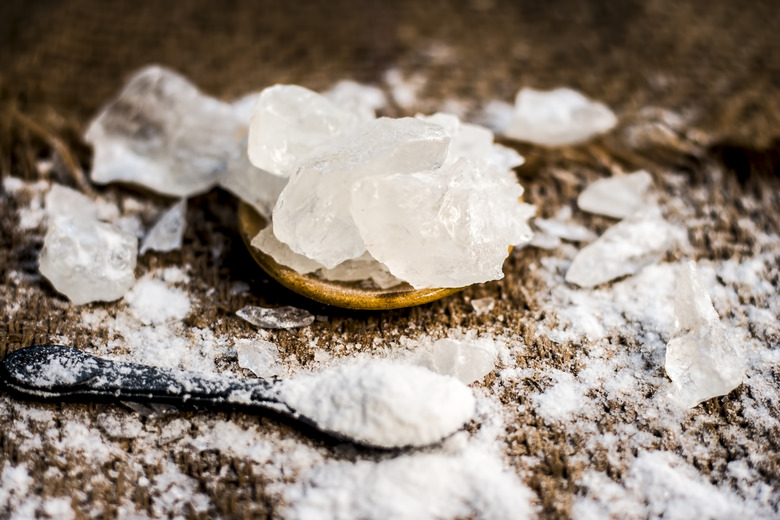How Is Synthetic Camphor Made?
What is Synthetic Camphor?
What is Synthetic Camphor?
With a chemical formula of C10H16O, synthetic camphor is related to pinene, the main ingredient in turpentine. It is a white crystalline powder that is insoluble in water but soluble in alcohol, ether, chloroform, benzene and carbon disulphide. It is flammable and volatile and its chemical properties are similar to those of natural camphor that was originally obtained from the Taiwanese camphor laurel tree (Cinnamomum camphora). In its crystalline form, synthetic camphor has a shining quality, plus it has a strong, penetrating, almost fragrant odor and a pungent, bitter taste.
Uses for Synthetic Camphor
Uses for Synthetic Camphor
Synthetic camphor is used extensively in many different industrial applications. It is vital in manufacturing polyvinyl chloride, cellulose nitrate and many plastics. It is a plasticizer in paints and lacquers, and it stabilizes smokeless gunpowder pyrotechnics.
For personal applications, synthetic camphor is found in such pharmaceuticals as antipruritics and anti-infectives as well as in rubefacient medications that relieve pain and itching. It is also an ingredient in over-the-counter medications like cough remedies and ear drops.
How It's Made
How It's Made
The production of synthetic camphor begins with the distillation of turpentine to yield pinene. The pinene is carefully dried, then converted into bornyl chloride, also known as ”artificial camphor," by treating it with dry hydrochloric acid gas. The resultant solid is then converted by several patented chemical processes into camphene by removing the hydrochloric acid with phenol, cresol, aniline and alkali.
Small Scale Production
Small Scale Production
In small batches, camphene can be converted directly into synthetic camphor by oxidating it with ozone, oxygen, potassium permanganate or any other readily available oxidizing agent. Unfortunately, this process does not lend itself to mass production, and additional steps are taken when large quantities of synthetic camphor are required.
Large Scale Production
Large Scale Production
For large quantities of synthetic camphor, the camphene is chemically converted into isobornyl acetate with glacial acetic acid. The isobornyl acetate is subsequently separated and converted by alcoholic sodium hydroxide into isoborneol. After the isoborneol has been purified, it is oxidized by nitric and sulfuric acids into the final synthetic camphor.
Cite This Article
MLA
Anderson, Ray. "How Is Synthetic Camphor Made?" sciencing.com, https://www.sciencing.com/how-does-5649691-synthetic-camphor-made-/. 14 November 2009.
APA
Anderson, Ray. (2009, November 14). How Is Synthetic Camphor Made?. sciencing.com. Retrieved from https://www.sciencing.com/how-does-5649691-synthetic-camphor-made-/
Chicago
Anderson, Ray. How Is Synthetic Camphor Made? last modified March 24, 2022. https://www.sciencing.com/how-does-5649691-synthetic-camphor-made-/
